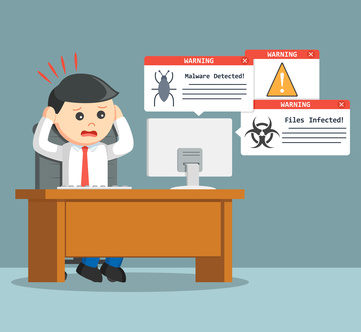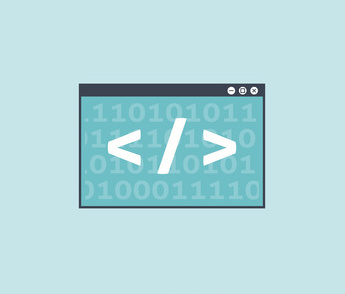
How to Find and Remove Malware From Websites
The extent of the damage a malware attack can have on your website typically depends on a number of variables, not the least of which is your response time. The longer it takes to detect and remove malware, the more expensive the recovery process becomes. Unfortunately, many types of malware are deliberately designed to keep themselves concealed for as long as possible. Eventually, however, the symptoms of a malware-infected website can become hard to miss.
Signs of a Malware Infection: Spotting Signs of an Attack
Certain malware attacks will be detectable almost immediately. Even the most untrained eye can spot website defacements, where hackers mask existing site content with a message or image of their choosing. While defacements generally make up only a relatively small portion of malware attacks, even more inconspicuous malware might leave traces of its work that are detectable by website owners, visitors, or both.
Other obvious signals of a malware-infected website include unauthorized modifications to your user account logins, missing or modified website files, web pages that freeze or crash, or a significant decrease in site traffic. Additionally, when your hosting company detects malware, you may receive a notification, which could lead to an account suspension. Search engines could even “blacklist” your site if evidence of malware is completely conclusive.

Signs of an attack are never a good thing — particularly for small business owners. A malware attack can have lasting consequences on search rankings, website performance, and more. For example, if your website is suspended or blacklisted, it could erode customer trust, damage your reputation, and even lead to a decline in revenue, regardless of whether your website serves as a primary point of sale.
Removing Malware From a Hacked Website
For those who don’t consider themselves particularly tech savvy, outsourcing malware removal to a security expert is likely your best bet. You can also use a website malware scanner that monitors your website daily and automatically removes malware when it’s detected. On the other hand, developers or other individuals with tech expertise might choose to manually remove malware themselves, depending on the time and resources available.
If you do decide to extract malicious code yourself, here’s how:

1. Identify the source.
You can do this through a file manager, local file search, or command line. Most web hosts offer file managers, though they’re generally optimized for basic file modification, rather than for specific content searches.
A local search — as its name suggests — involves downloading the contents of your live site to your local machine, making the search process a little simpler. Access to a command line is rare in a shared hosting scenario, but if you have it, you can perform a far more nuanced search. With it, you can find files that have been recently modified as well as specific contents within files.
2. Look for the right clues.
When you do find files you believe may have been infected, look closely for common syntax used by attackers when injecting malware into a site. Be sure to look for any of the following PHP code snippets: eval, base64_decode, fromCharCode, gzinflate, shell_exec, globals, error_reporting(). These represent just a handful of countless functions used by modern cybercriminals, but they’re present in many PHP hacks.
3. Remove the malicious software.
Once you’ve identified infected files, remove them, and your site will be malware-free. While it’s possible to manually remove malware, we always recommend using a website scanner for speed and accuracy. The SiteLock scanner, for example, automates malware detection and elimination. It uses a file transfer protocol scan to download, inspect, and clean website files. Then, it uploads those files back to the host server without disrupting the user experience.
Website Security Issues Never End

Defending against malware is an ongoing effort for every website owner. To minimize your risk, focus on preventing vulnerabilities in your site’s source code, as cybercriminals will certainly test these backdoors. You can do this regardless of whether you have a programming background or not: Simply install updates and patches promptly. An automated patching system will make this process even easier. Likewise, use only plug-ins and features you absolutely need (and uninstall those you no longer use).
Implement a vulnerability scanner, not to be confused with a malware scanner, to automatically detect areas where improvement is needed. If you use a content management system, such as WordPress or Drupal, to power your website, it’s best to use a vulnerability scanner that automatically patches vulnerabilities. Antivirus or malware scanners are designed to identify viruses, trojans, ransomware, and other malware on a device while also offering solutions in real time. Finally, have a web application firewall in place to block malicious bots that cybercriminals use to locate potential entry points.
The modern web is about 30 years old, but in some regards, it still feels like the Wild West. Luckily, plenty of website malware removal tools exist to help website owners protect what’s important to them online. It’s up to you to take advantage of them. If you’re dealing with a hacked site, explore our comprehensive website security plans.
Want to learn more about malware? Check out these additional resources from SiteLock:





